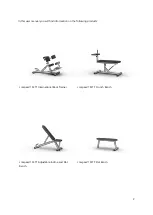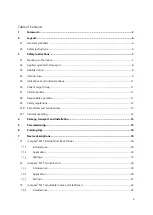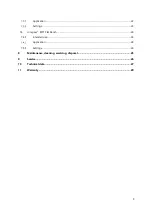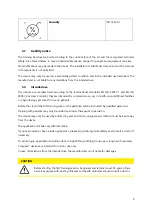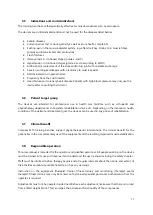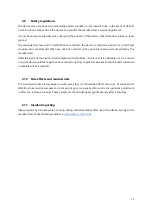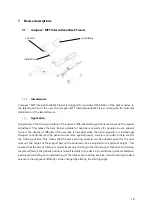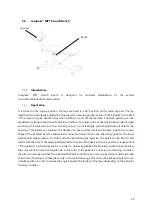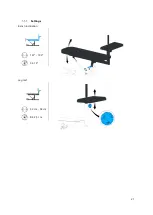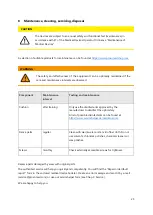
16
6
Training tips
The device must be adjusted to the ergonomic conditions of the user before the first training session.
The adjustment of the training device for the user is the responsibility of the qualified personnel.
•
To avoid injuries and to make the training more effective, a general and special warm-up
program should be completed. This prepares the circulation and musculature for the loads.
•
Select a safe and firm sitting position, with the pelvis and spine close to the seat. The back,
especially the lumbar spine, must be stabilised as best as possible during the exercise. If
available, the backrest is used to stabilise the spine.
•
The equipment allows for a double-legged or single-legged or double-armed or single-armed
workout.
•
The correct positioning of the patient in the starting position contributes greatly to the quality,
effectiveness and safety of the exercise performance. The device axes and pivot points must be
adjusted as precisely as possible to the movement axes of the joints to be exercised in order to
avoid the occurrence of compression and shear forces.
•
Perform the movement slowly and in a controlled manner.
•
The intensity of the load should be chosen lightly at the beginning of the training. Increase the
load gradually to avoid overload and discomfort.
•
The equipment allows for a double-legged or single-legged or double-armed or single-armed
workout.
•
If mobility is restricted or pain occurs, immediately reduce the load and/or the extent of
movement.
•
Training and therapy only take place in the pain-free area.
CAUTION
Improper or excessive training can lead to health problems.
CAUTION
Pressurized breathing and the associated increase in intrathoracic pressure
can lead to damage to the vascular system in people at risk. Perform
movement slowly and in a controlled manner.
WARNING
If you experience symptoms such as rapid heartbeat, dizziness, shortness of
breath, nausea or chest pain, profuse sweating or headache, stop exercising
immediately.

